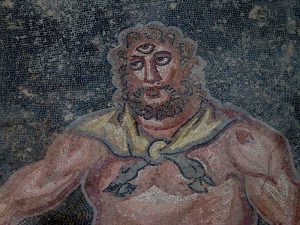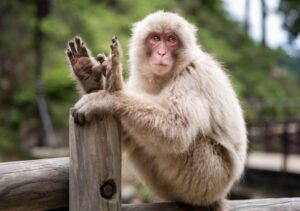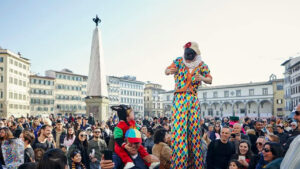The “smile” of statues in the art of archaic Greece
5 min read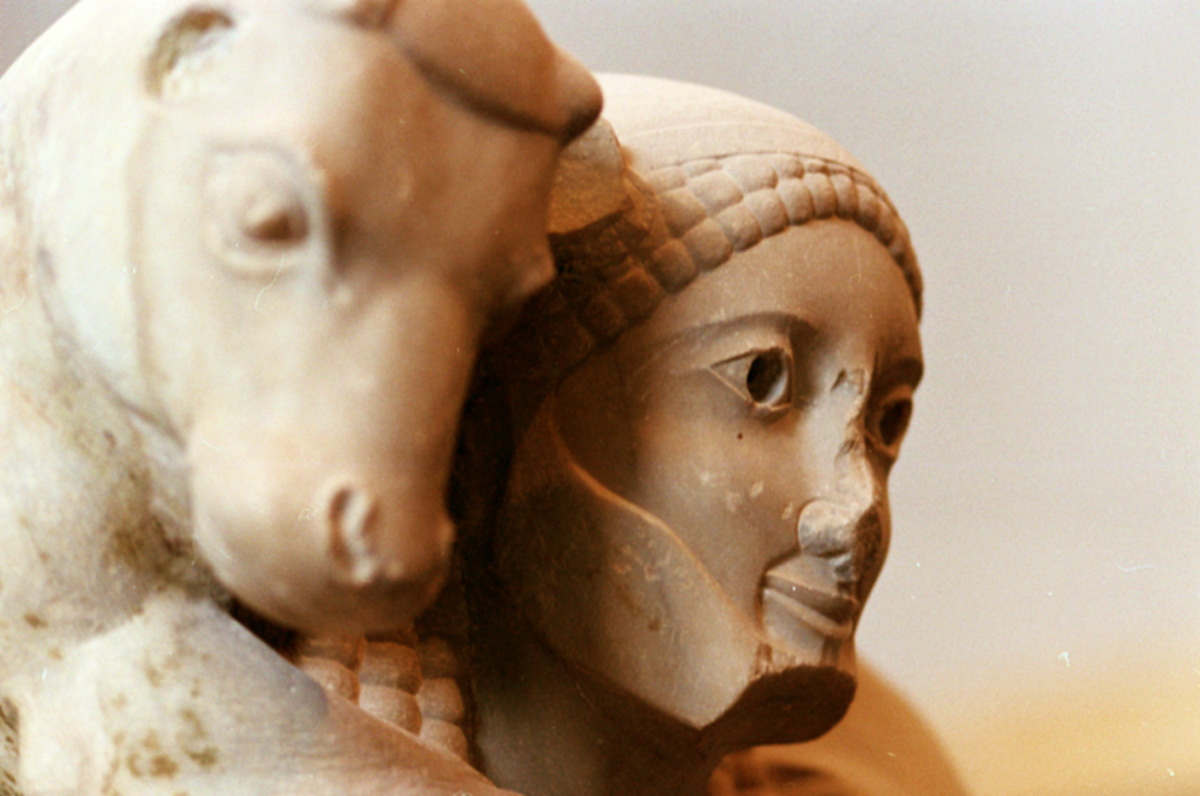
The debt of occidental art and culture towards the wide range of artistic productions of ancient Greece it’s an established fact, but that doesn’t mean that we should stop valuing. Hellenistic painting, sculpture and architecture fascinated before the Romans, then Romanticism artists, whom are responsible for the rediscovery of classic models and their elevation to maximum font of inspiration for all European art of XIV – XIX centuries.
After all, in the archaeological language inspired by the precept of Johann Joachim Winckelmann, the term “classic” encloses a concept of exemplar perfection, that manifested itself in the period between the first decade of V century BC and Alexander the Great’s death (323 BC), when Greek art reached its peak unsurpassed.
And having the Greeks conceived the man as meter of all things, as concrete image of universal order, nonetheless as canon for the depiction of the divinities themselves, it does not wonder that the symbolic works fall into the field of sculpture. Like this, Polycletus’ Doryphoros, Myron’s Discobolus and pedimental statues of Fydia’s Parthenon constitutes the highest masterpieces of classic realism.
Although, these forms were reached after a century of hard attempts, which find a testimony in the archaic testimony of VI century BC. In this phase, human figure can seem naive, primitive, pervaded by artistic solutions apparently unjustifiable. This is the case of, for example, of a characteristic trait of that period’s statues, that in the majority of the cases show off a to say the least “enigmatic” smile.
Is it a manifestation of joy? Or do we have other explanations?
The first images of the men: the kouros and the kore
The so-called “archaic smile” signs early the face of that sculptural model, predominant in the VI century BC, known as kouros (from the Greek “young”) that distinguish himself for the nudity and the substantial rigidity of the pose: the orientation is strictly frontal; the arms are outstretched alongside the hips until the thighs, on which it beats their clenched fists; just one advanced leg suggests a hint of movement.
To the virile naked figure there is then the female one dressed up, known as kore (from the Greek “maiden”). Also here the pose is static and the heavy and long garments, that hides the body of these young women until the feet, force the entire composition almost to the form of a rigid column. Unmissable, on the face, the semi-long cut of a smile.
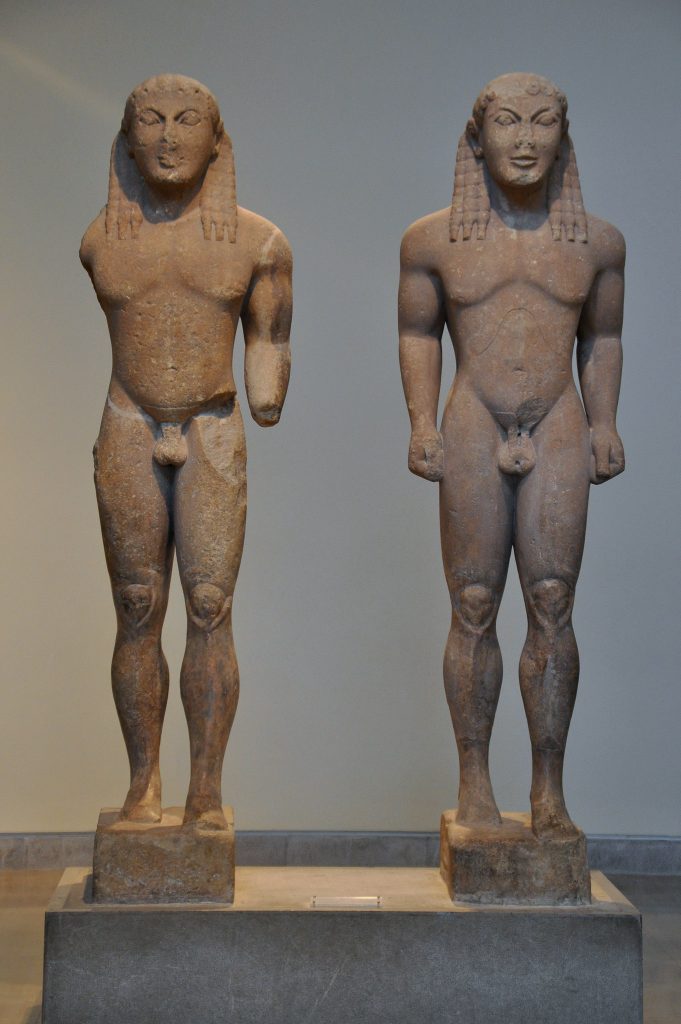
Source of the image: flickr.com/photos/hesim/7228288448
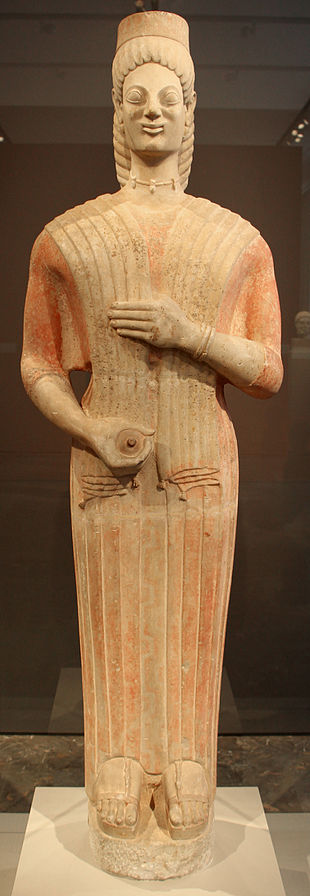
Source of the image: commons.wikimedia.org
It’s interesting how, to the progressive slackening of the static of these statuary types, do not correspond at all, until the first decade of V century BC, the overcoming of this trait of the face. Its tenacious persistence, in fact, is recognizable also in some masterpieces recovered from the so-called Perserschutt, the rubble dumping of works of art filled on the Acropolis by the Athenians after the battle of Platea (479 BC).
So, for example, the kouros moschophoros (from the Greek “calf bearer”), that breaks the traditional scheme bringing the arms to the chest, with the hands to squeeze the paws of the animal in a symmetrical X game. And also the knight Rampin, the most ancient equestrian statue of Greek art, in turning with vitality from the main ax of the composition, violating the symmetrical austerity of its time, folds again the lips in a smile. It doesn’t fail to smile, in the end, the Kore with the peplos, whose arm bent forward cracks the rigid posture of the body, covered by the wrinkle-free dress.
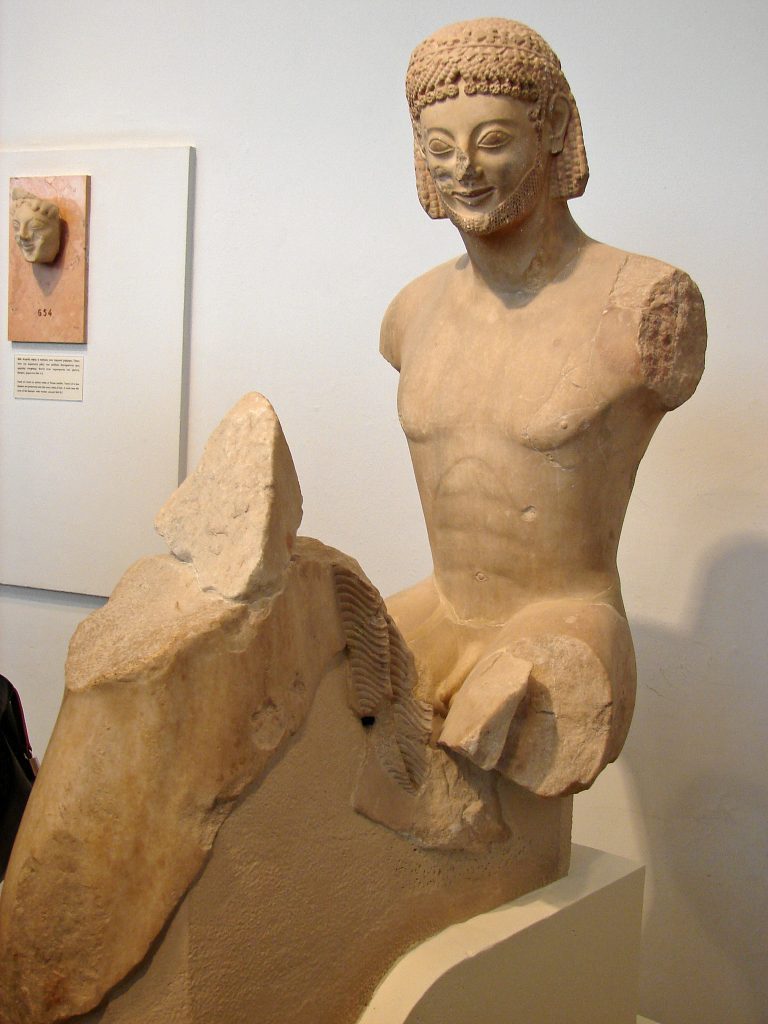
Source of the image: it.wikipedia.org/wiki/Cavaliere_Rampin
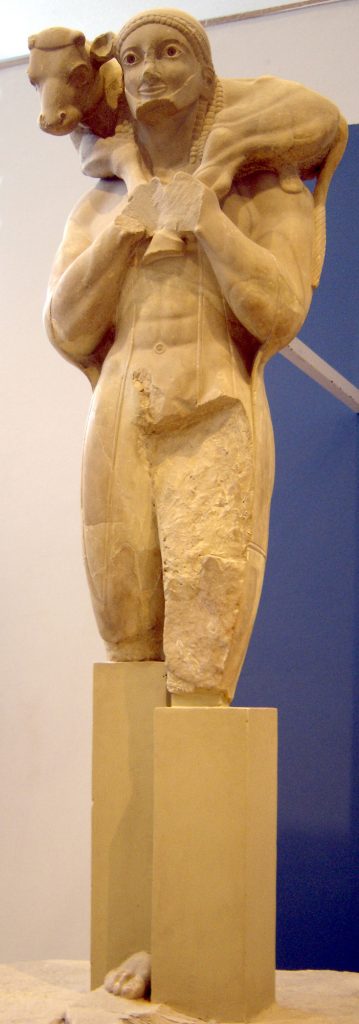
Source of the image: commons.wikimedia.org

Source of the image: flickr.com/photos/profzucker/15808502755
The “archaic smile” and its interpretations
In the attempt of understanding the hidden meaning behind this smiling faces, the scholars have provided the most different interpretations. Some considers it an authentic expressive element: of serene benevolence in the statues intended to represent the divinity; of complacency, in the ones representing the devotes, glad of their bond with with the god; or simply of general satisfaction for the full enjoyment of a healthy and young body. It has also considered, on the contrary, that it should be about a courtly mask, destined to hide personal feelings: in short, a real one “fake smile”.
The most convincing option, in reality, is that the archaic smile represents the attempt to of that time’s artists to solve the problem of the mouth’s realistic rendering, which on human’s face it does not rest as a flat horizontal line, but curves the corners in depth. However the archaic art, which still didn’t know the foreshortening, had conceived the human figure according to the simple juxtaposition of four plans, corresponding the four main observation points of the same: front, profile, rear, and again profile.
Once translated on stone, not allowing this scheme of spinning realistically the mouth in the third dimension, the retreat in depth was rendered by lifting up the end of the lips on the front observation plan, from which the consequent semblance of a smiling face.
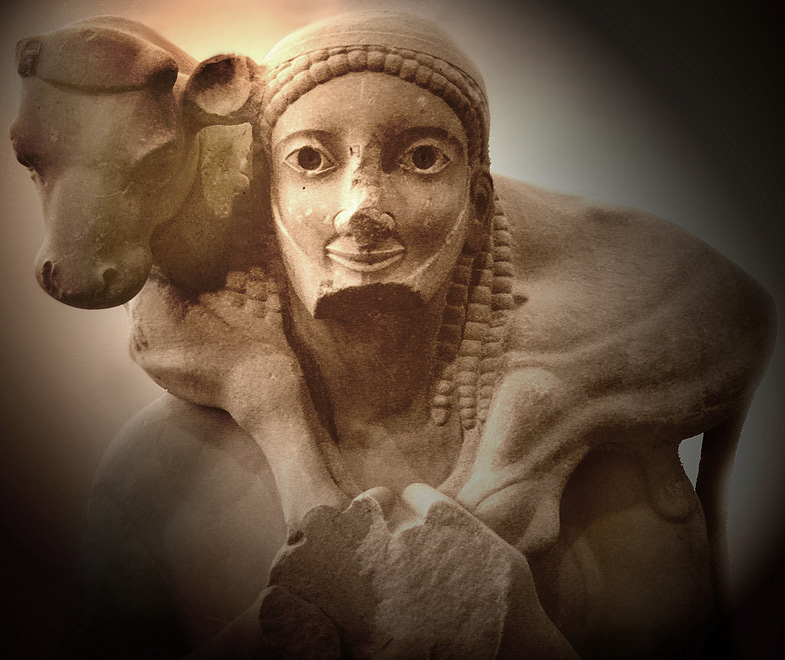
Source of the image: it.wikipedia.org/wiki/Moscoforo
With this in mind, the “archaic smile” constitutes a visible proof of the fundamental path accomplished by the Greek art until the full comprehension of human anatomy, which shows itself in the masterpieces of the classical era. Together with all the artistic conventions of its time, this laughter it’s a sign not already of primitive naivety, of the natural path of discovery and knowledge of reality, for which the art, as any other form of culture and manifestation of knowledge, requires its due time.
To go into detail:
R. Bianchi Bandinelli, Introduzione all’archeologia, Roma-Bari 1976
G. Becatti, L’arte dell’età classica, Milano 1995, pp 77-89 e 112-122
L. Rocchetti, Le gioie sepolte. Scultura greca del periodo arcaico, Roma 2019
*Source of the cover image: flickr.com/photos/5telios/3582702468

Sono Sara, studentessa di lingue e culture per il commercio internazionale presso l’Università di Verona. Amo scoprire nuove culture e tradizioni attraverso il viaggio, grazie al quale mi sono appassionata alle lingue straniere, ed in particolar modo all’inglese e allo spagnolo. Tra le mie passioni figurano la danza e il canto, due discipline che mi accompagnano sin da piccola e attraverso le quali riesco ad esprimere me stessa, così come la lettura di libri, trascorrere il tempo ascoltando musica e guardare film e serie TV. Uso inoltre la scrittura (creativa e non) come valvola di sfogo per fuggire dalla realtà quando mi ci sento intrappolata. Se mi chiedessero cosa è per me la comunicazione al giorno d’oggi potrei tranquillamente dire che è uno dei vettori su cui si basa la società moderna, ed è perciò di fondamentale importanza veicolarla correttamente


